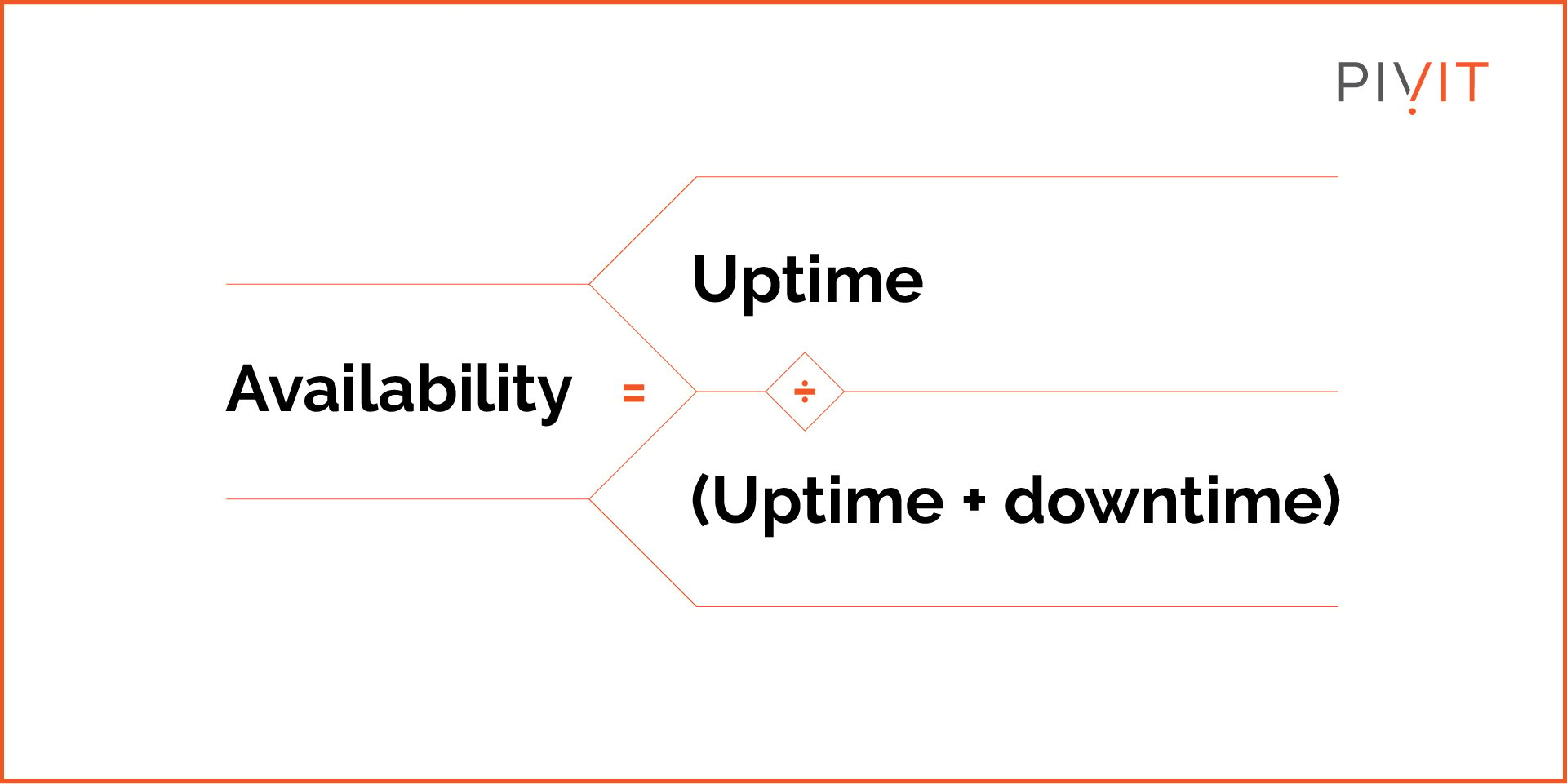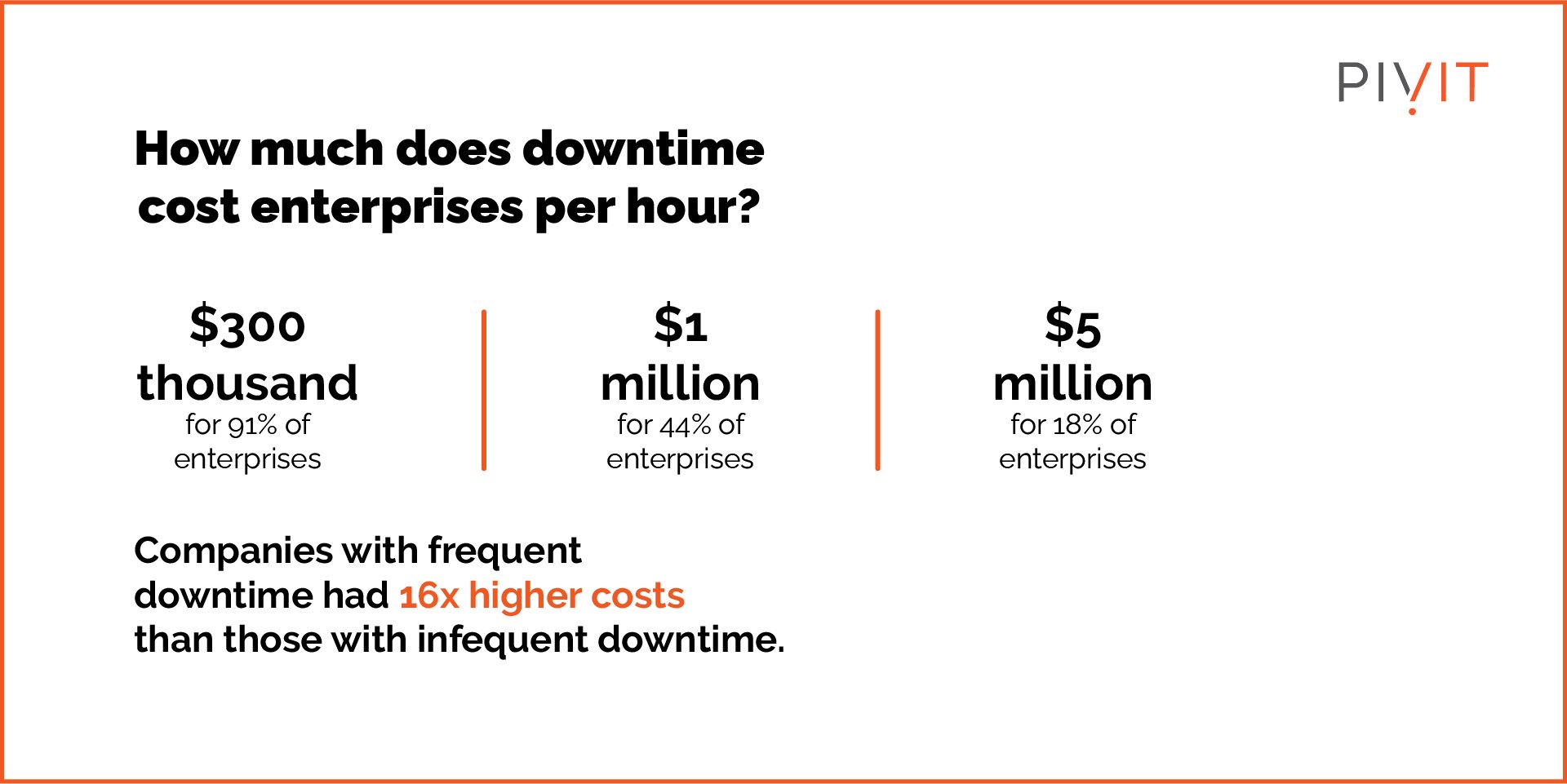Why Uptime and Availability Is So Important for Your Network
%20Why%20Uptime%20and%20Availability%20Is%20So%20Important%20for%20Your%20Network.png)
In the hosting and cloud world, uptime and availability are often used interchangeably. However, these metrics are unique and have different implications for the network. At the same time, both indicate the network's reliability for its users.
Uptime and availability have become even more critical in the wake of the “new normal” of the work environment where companies are following a hybrid approach.
It’s estimated that 16 percent of companies worldwide have gone entirely remote. Network resources must be up and running and be available for use by these employees.
Similarly, for service providers, it’s essential to make resources available for their clients, given the cut-throat competition in the industry.
In this article, we will provide the following:
- An explanation of the difference between uptime and availability of networks.
- A discussion of their importance.
- An outline of measures enterprises can take to improve both metrics.
Not the article you were looking for today? Try these out:
- 6 Questions To Ask When Considering SD-WAN Technology
- Which to Choose? Short-Term vs. Long-Term Maintenance of IT Assets
- Is Network Automation Worth the Money?
Uptime vs. Availability: What’s the Difference?
Uptime is a metric expressed in percentage that indicates the time a network or system was ready for operation under normal conditions. It represents an operational state as defined by the provider.
Uptime is typically based on historical data and expresses the percentage of time a machine has been working. However, it doesn’t account for all the operations or services the system should run.

In a way, uptime is an indicator of the availability of network resources, but it’s not a guarantee and certainly not for all processes or all resources.
This is where availability comes in, which is a metric that indicates the probability of the network working as and when needed. It indicates that the network is running as intended and serving functionality to its intended users. Availability is a more profound metric for measuring the reliability of a network.
Here’s an example that will make the difference clearer.
Suppose a hosting provider considers the server responding to its monitoring request. For its part, the server would be considered operational even when there aren’t enough resources for running all applications. In other words, it’s running normally at full capacity and not accepting more requests.
Technically, the uptime here should be low as some requests are unresponded. However, the server is running, so the provider considers its server’s uptime as almost 100 percent.
On the other hand, if we were to measure the server's availability at this point, it would indicate that it was unavailable to respond to certain requests.
It’s important to note that uptime and availability vary by service provider. A comprehensive explanation for each metric should be mentioned in the service level agreements (SLAs).
Importance of Uptime
Most service providers mention and guarantee uptime as opposed to availability. While it’s based on the past and doesn’t guarantee future availability, it’s still an essential metric from marketing and service quality perspectives.
To gauge the importance of uptime, consider the costs of downtime (which is basically the opposite of uptime and indicates the percentage of time the network was down).

(Source: data)
Back in 2013, a study by the Ponemon Institute revealed that the cost of downtime for data centers ranged from $45 to $95 per square foot. It put the average cost per downtime incident at $690,204.
These numbers are from a decade ago, so you can imagine how costly downtime would be today for data centers, service providers, and any other IT organization, even if they don’t directly provide services to end users.
The recent numbers are even scarier. The Uptime Institute 2022 Outage Analysis report says that 60 percent of outages cost data centers $100,000 or more.
If your network is down, it will cost you not just money but also your reputation in the market.
Importance of Network Availability
Availability is a metric that’s a bit more difficult to track than uptime. However, you shouldn’t underestimate its importance. High availability is a prerequisite for access to applications and data that reside on the network.
Just because your network is up and running doesn’t mean all the resources are also available for applications to run, and users can access that data.
Network availability is also linked to latency, which indicates a delay in services or, more specifically, packet relay on the network. A network with high availability would have lower latency. Users would be able to access necessary applications and data quickly.
Availability may be even more important for data centers and service providers that power critical operations such as healthcare. However, today, all industries expect high network availability to deliver services to their customers.
Disruptions in availability can have similar costs or even more in the long run as downtime. Availability may also suffer at the hands of attacks such as Distributed Denial of Service (DDoS), which increased by 79 percent in 2022.
How to Ensure High Uptime and Availability
Both uptime and availability are intrinsically linked with network hardware. If the hardware is reliable, uptime will be over 99.9 percent, and availability high. Here’s how you can ensure your enterprise’s data center has near-perfect uptime and availability metrics:
Replace Equipment on Time
Your hardware’s lifecycle is finite. While you can consider using equipment beyond the end of life or even the end of service life, make sure to replace critical equipment when it's due. For most critical infrastructure, the earlier you replace it after the end of life, the better.
Create a Sound Maintenance Strategy
Downtime and unavailability often result from hardware failure, which in turn, results from poor maintenance.
Ensure all your network devices are covered by maintenance from the manufacturer or a third party. This ensures that it’s updated at all times and is replaced promptly if and when it fails. Maintenance also gives a glance into the health of your network.
Monitor and Test Security
Many outages result from cyberattacks, which have become rampant and more sophisticated in the last decade. Many attacks, including DDoS and ransomware, are designed to create network outages and reduce data availability. Therefore, monitoring and testing the network’s security and continuously improving it is essential for ensuring high uptime and availability.
Intuitive Capacity Planning
Your network should be able to handle maximum requests for optimal availability. Network capacity planning is instrumental in ensuring your infrastructure can handle the peak demand. That may mean occasionally adding more servers, switches, storage, and other necessary network equipment.
Create Multiple Access Paths
Having a single access point or path for data can be disastrous if failure occurs. Having multiple pathways to access data can ensure that it’s available even if one or two paths fail. Again, ensuring security for these access paths is crucial.
Stay On Top of Software Updates and Patches
Ensure all software on your network is up to date. This process can be automated for better results, so as updates or patches are released, they are instantly installed. With updated firmware, the hardware performance also improves.
Choose PivIT for Success!
Whether you run a data center or provide services through IT infrastructure, the coveted five-nine uptime and high network availability are essential for your enterprise’s success. That, in turn, is dependent on your network hardware.
PivIT can cover your needs, whether it’s procuring equipment for network refresh or maintaining existing devices. With its flexible and reliable maintenance program, OneCall, you can even maintain legacy equipment and ensure your dated infrastructure doesn’t cause a downtime crisis. Choose PivIT today to ensure you have this important area of your business covered at all times.



